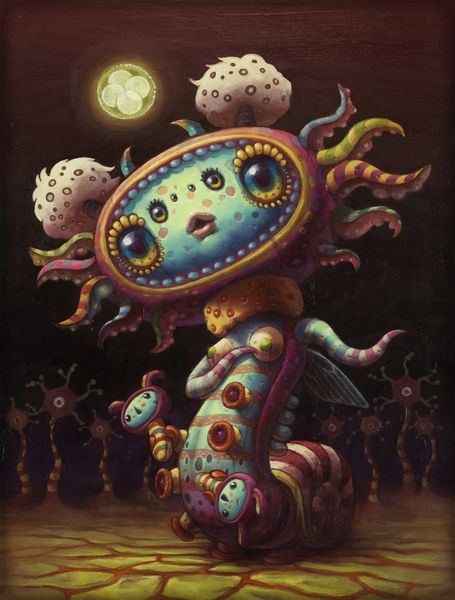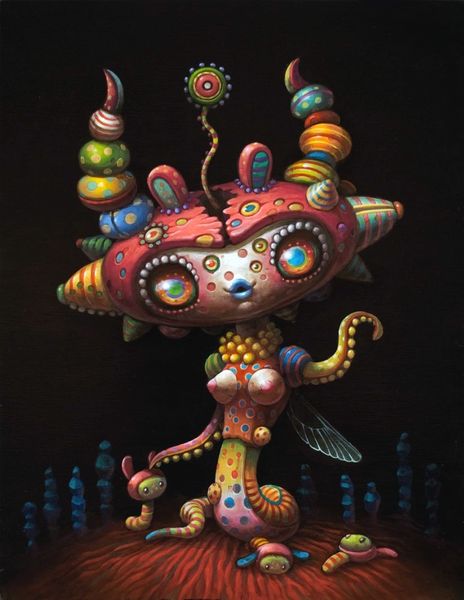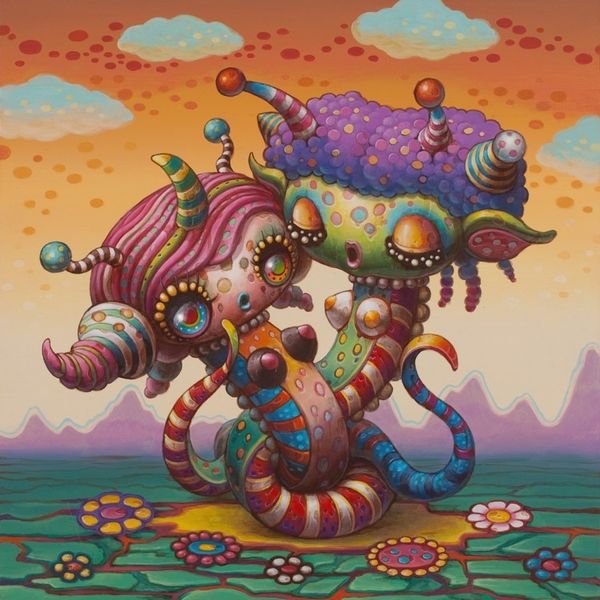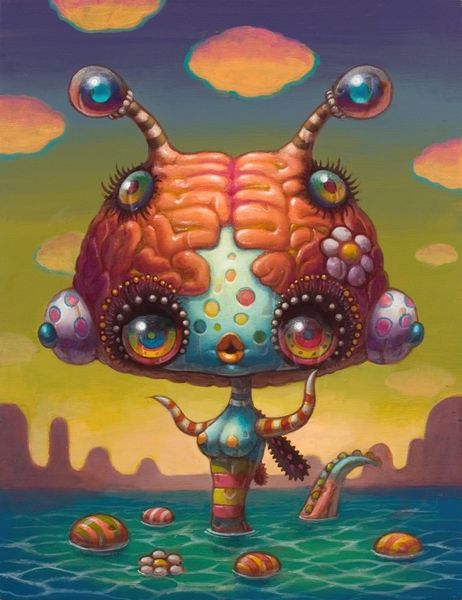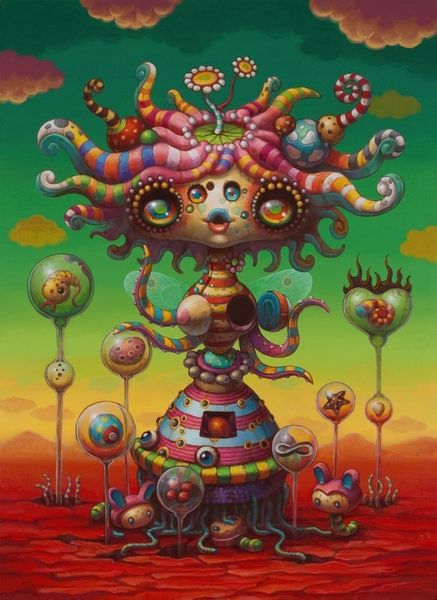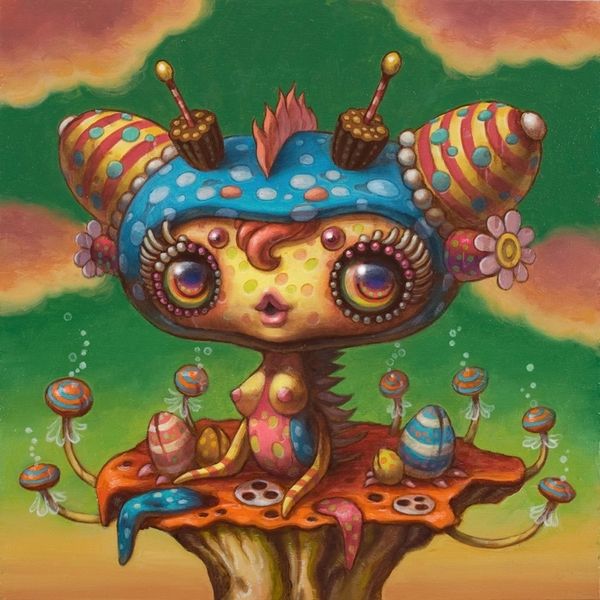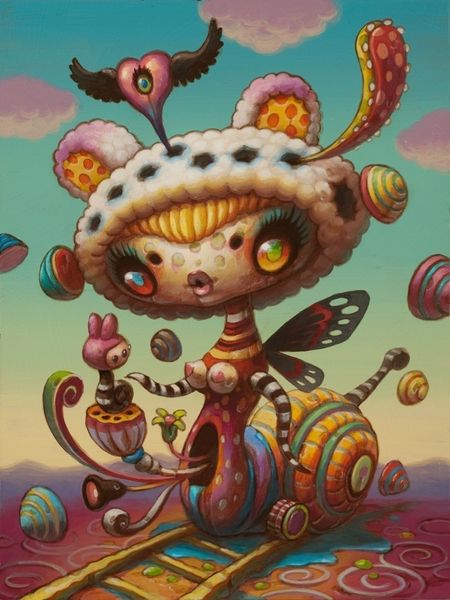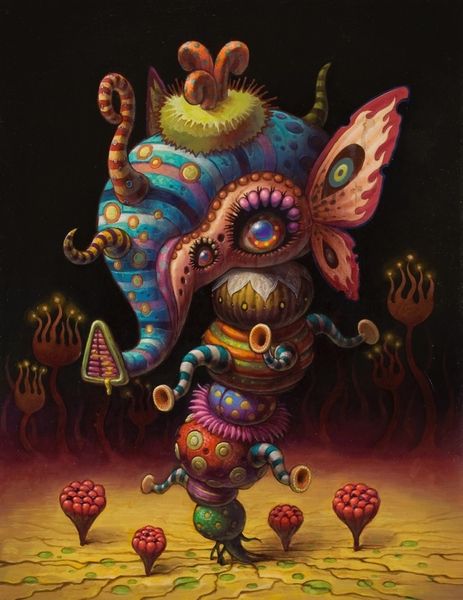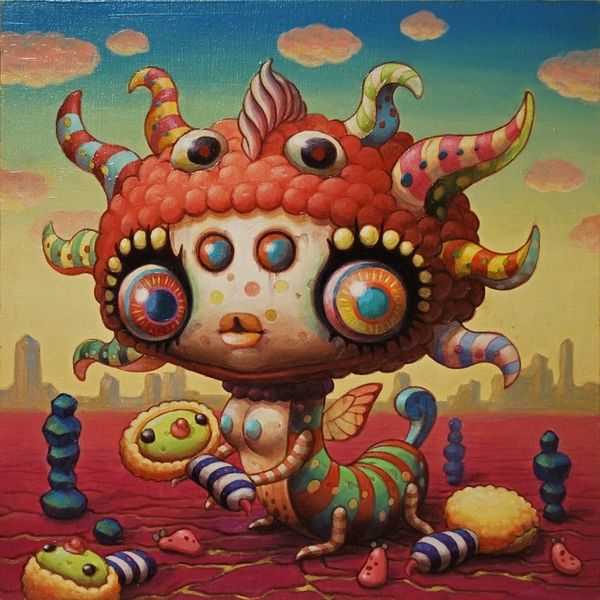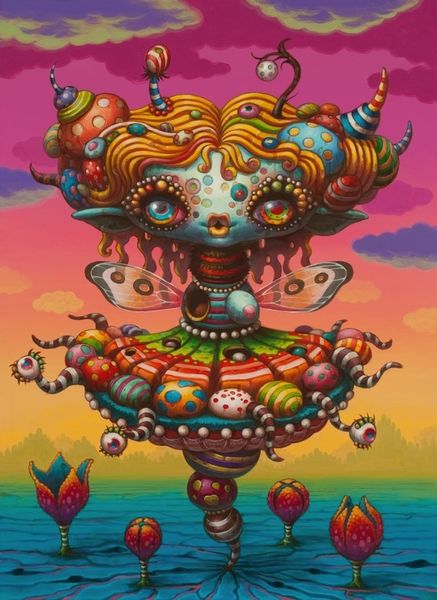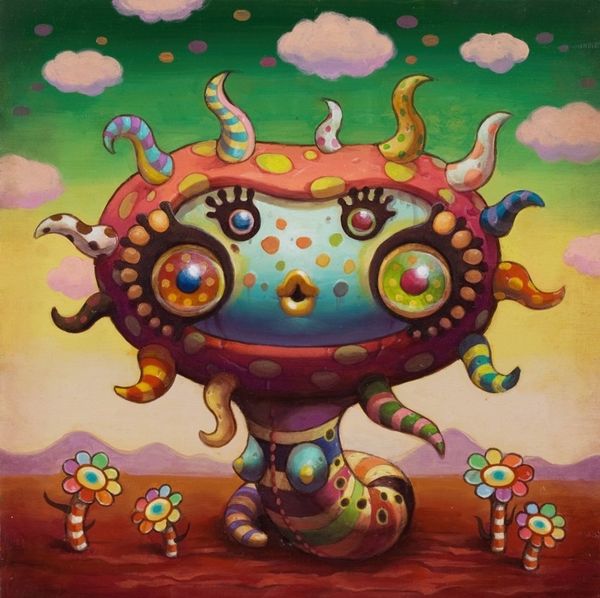
painting, acrylic-paint
#
pop-surrealism
#
painting
#
caricature
#
fantasy-art
#
acrylic-paint
#
figuration
#
geometric
#
surrealism
#
realism
Copyright: Modern Artists: Artvee
Curator: Well, isn't this cheerful? My first thought is that it feels whimsical, almost like a page out of a children’s book, despite the slightly unsettling single eye. Editor: Indeed! What we have here is an acrylic painting, aptly titled "Rag Doll," by the artist Yoko d'Holbachie. Though undated, the artist's signature pop-surrealist style offers clues. Holbachie gained traction in online art communities, which then translated into gallery representation, showing how online visibility has democratized access for artists outside the traditional art establishment. Curator: Pop-surrealism is fitting; there’s definitely a sense of the uncanny at play here. The figure reminds me of a child’s toy, something cobbled together from various sources, which gives it a slightly grotesque yet endearing quality. The artist toys with archetypes. That single eye, for instance—it’s unsettling but captivating, like an all-seeing force or maybe a symbol for self-awareness. Editor: Yes, the motif of the single eye often represents a certain spiritual perspective, or a focus on inwardness, contrasting sharply with the outward display of vibrant colours and playful patterns that surround it. Look how those geometric forms—the spheres and the polka dots—play against the soft curves of the elephantine features, evoking a world of dreams or altered consciousness, the space where our deeper anxieties play out. Curator: Right, there's an emotional dichotomy happening. The piece's cartoonish elements invite feelings of delight. Yet, when your eye locks with the Rag Doll’s central, singular orb, you enter into a reflective and questioning mood. Holbachie offers a powerful commentary about commodification, transforming cultural archetypes and commercial images to inspire questions about manufactured desires in society. Editor: Agreed. Its accessibility on the surface masks more layered symbols of innocence, observation, and self-inspection, revealing deeper cultural connections within the realm of the subconscious. Ultimately, what we're seeing may challenge how we form perceptions and judgments about self-identity in an ever-commercialized and technologized world. Curator: Definitely a conversation starter, forcing us to unpack how these easily recognizable motifs from popular culture intersect to form deeper questions. Editor: Exactly. I find that to be one of the piece’s more significant appeals.
Comments
No comments
Be the first to comment and join the conversation on the ultimate creative platform.

